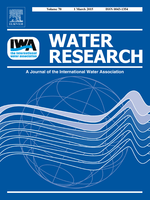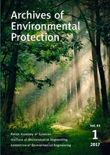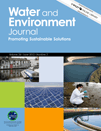
Membrane and Water Treatment
Scope & Guideline
Advancing Knowledge in Membrane and Water Treatment Technologies
Introduction
Aims and Scopes
- Membrane Technology Innovations:
Research dedicated to the development and optimization of various membrane types, including nanofiltration, reverse osmosis, and hybrid systems, aimed at enhancing separation efficiency and reducing fouling. - Water Quality Assessment and Management:
Studies that focus on assessing water quality parameters and developing management strategies that incorporate advanced treatment technologies to address pollutants in various water bodies. - Adsorption and Biosorption Techniques:
Research exploring the use of different adsorbents, including natural and engineered materials, to remove contaminants from water, emphasizing the mechanisms and efficiencies of these processes. - Wastewater Treatment and Resource Recovery:
Investigations into novel methods for treating wastewater and recovering valuable resources, such as nutrients and energy, while minimizing environmental impacts. - Environmental Impact and Sustainability:
Research that evaluates the ecological implications of membrane and water treatment technologies, promoting sustainable practices in water management.
Trending and Emerging
- Integration of Artificial Intelligence (AI):
Recent publications indicate a growing trend towards integrating AI and machine learning techniques in water treatment processes, enhancing data analysis, predictive modeling, and operational efficiencies. - Sustainability and Resource Recovery:
There is an increasing emphasis on sustainable practices and resource recovery from wastewater, including nutrient recovery and energy generation, aligning with global sustainability goals. - Advanced Membrane Materials:
Research is trending towards the development of novel membrane materials, including those incorporating nanomaterials and functionalized surfaces, to improve performance and reduce fouling. - Microplastics and Emerging Contaminants:
The focus on microplastics and other emerging contaminants in water sources is rising, prompting innovative treatment solutions and assessments of their environmental impacts. - Real-Time Monitoring and IoT Applications:
The application of Internet of Things (IoT) technologies for real-time monitoring of water quality and treatment processes is gaining traction, reflecting a shift towards smart water management solutions.
Declining or Waning
- Traditional Water Treatment Methods:
There is a noticeable decrease in publications related to conventional water treatment methods, such as coagulation and sedimentation, as researchers shift towards more advanced and efficient technologies. - Chemical Treatment Processes:
Research focusing on purely chemical treatment processes, such as chlorine disinfection alone, is declining as there is a growing preference for integrated approaches that combine physical, chemical, and biological methods. - Non-Membrane Based Filtration Techniques:
The interest in non-membrane filtration techniques, such as sand and gravel filtration, appears to be waning, likely due to the increased focus on advanced membrane technologies that offer better performance and efficiency.
Similar Journals

WATER RESEARCH
Driving impactful discoveries in water science since 1967.WATER RESEARCH, published by Pergamon-Elsevier Science Ltd, is a premier international journal dedicated to the advancement of knowledge in the interdisciplinary field of water science and technology. With a significant impact factor, WATER RESEARCH holds a distinguished position, consistently ranking in the top quartile (Q1) across multiple categories including Civil and Structural Engineering, Environmental Engineering, and Pollution. Established in 1967 and set to continue its legacy until at least 2024, this journal provides a vital platform for researchers and professionals to disseminate cutting-edge findings related to water sustainability, quality, and management. Although the journal follows a traditional access model, its commitment to disseminating impactful research ensures that it remains an essential resource for academia and industry alike. With a rigorous selection process, the journal includes articles that significantly contribute to the understanding and resolution of global water-related challenges, making it an invaluable asset for researchers, students, and practitioners engaged in this critical area of study.

Environmental Science-Water Research & Technology
Exploring the future of water research and engineering.Environmental Science-Water Research & Technology is a premier journal published by the Royal Society of Chemistry that focuses on the latest research and technological advancements in the field of water science and engineering. Since its inception in 2015, the journal has steadily gained recognition for its rigorous peer-review process and commitment to advancing our understanding of fresh, wastewater treatment, and sustainable water management. With a remarkable 2023 impact factor and consistently achieving Q1 status in both Environmental Engineering and Water Science and Technology categories, this journal ranks within the top percentile of its field, underscoring its pivotal role in fostering innovative solutions to global water challenges. Currently listed as Rank #26/261 in Water Science and Technology and Rank #34/197 in Environmental Engineering by Scopus, it provides an essential platform for researchers, professionals, and students alike. The journal embraces a broad spectrum of topics concerning water research, aiming to bridge the gap between scientific understanding and practical application.

Archives of Environmental Protection
Shaping Sustainable Practices through Rigorous ResearchArchives of Environmental Protection, published by the Polish Academy of Sciences, is a pivotal journal in the field of Environmental Science. With an ISSN of 2083-4772 and E-ISSN of 2083-4810, this journal serves as a critical platform for disseminating innovative research and comprehensive reviews that address the complexities surrounding environmental issues. As of 2023, it holds a respectable Q3 ranking in Environmental Science, reflecting its relevance and contribution to the academic community, indicated by a Scopus rank of 124 out of 233 in the General Environmental Science category. Although it operates without Open Access, the journal's consistent publication from 2007 to 2024 emphasizes its commitment to advancing knowledge in diverse areas of environmental protection. Researchers, professionals, and students are encouraged to engage deeply with the wealth of insights offered through the rigorous peer-reviewed articles presented in this journal, which strive to foster sustainable practices and environmental stewardship.

Water Reuse
Pioneering Research for a Water-Wise World.Water Reuse is a pioneering journal dedicated to advancing the field of water science and technology, particularly focusing on innovations in water recycling and reuse strategies. Published by IWA Publishing in the United Kingdom, this journal has quickly established itself as a vital resource for researchers, professionals, and students engaged in sustainable water management practices. With an impressive impact factor and a ranking that places it in the top quartile for both Water Science and Technology and Filtration and Separation, Water Reuse offers an open-access platform that fosters the dissemination of high-quality research. Since its inception in 2021, it has garnered attention for its commitment to addressing critical global challenges related to water scarcity and environmental sustainability. The journal provides a crucial forum for the exchange of knowledge and best practices, contributing significantly to the advancement of water reuse methodologies. By encouraging interdisciplinary collaboration and the publication of pioneering studies, Water Reuse is poised to play a central role in shaping the future of water management.

Membranes
Exploring innovations in filtration and separation technologies.Membranes, published by MDPI since 2011, is an esteemed open access journal dedicated to advancing the field of membrane science and technology. With an E-ISSN of 2077-0375, this journal serves as a vital platform for researchers and professionals from various disciplines such as chemical engineering, filtration, and separation technologies. Holding a commendable Q2 ranking in Chemical Engineering (miscellaneous) and notable placement in filtration and process chemistry categories, it provides a robust framework for researchers to disseminate groundbreaking findings. The journal's commitment to open access ensures a wide-reaching impact, allowing for unrestricted sharing of high-quality research that addresses the critical challenges and innovations in membrane technology. Situated in Switzerland, Membranes is not only a cornerstone for academic inquiry but also a leading resource for students and industry experts seeking cutting-edge developments in their fields.

WATER ENVIRONMENT RESEARCH
Innovating research for a cleaner, greener water environment.WATER ENVIRONMENT RESEARCH is a leading scholarly journal dedicated to disseminating cutting-edge research in the fields of water science and technology. Published by WILEY, this esteemed journal (ISSN: 1061-4303; E-ISSN: 1554-7531) is renowned for its rigorous peer-reviewed articles that explore critical issues related to ecological modeling, environmental chemistry, pollution, and waste management. Established in 1992 and continuing through 2024, WATER ENVIRONMENT RESEARCH has secured a notable position within its category quartiles, ranking in the Q2 tier for several disciplines, including ecological modeling and water science and technology. It is highly regarded in the Scopus database, holding a rank of #53 out of 261 journals in Environmental Science related to Water Science and Technology, positioning it in the 79th percentile. As it continues to bridge research and practice, this journal serves as an essential resource for researchers, professionals, and students striving to advance knowledge and foster sustainable solutions within the water environment sector.

Engenharia Sanitaria e Ambiental
Elevating standards in environmental science education.Engenharia Sanitaria e Ambiental is a distinguished journal published by the Associação Brasileira de Engenharia Sanitária e Ambiental and has been an influential resource in the fields of sanitation and environmental engineering since its inception. With an Open Access format established in 2004, it ensures that invaluable research is freely accessible to a global audience, supporting the dissemination of knowledge and innovation. Based in Brazil, the journal addresses critical issues surrounding waste management and environmental sustainability, contributing significantly to the discourse in these areas. Although currently ranked in Q4 within its category as of 2023, it serves as a platform for emerging research and aims to elevate the standards of environmental science education and practice. Researchers, professionals, and students alike benefit from its commitment to enhancing the understanding of sanitary and environmental challenges, making it an essential resource for those striving to contribute to a healthier and more sustainable world.

Desalination and Water Treatment
Catalyzing Change in Water Resource ManagementDesalination and Water Treatment is a pivotal journal in the realm of water science and technology, focusing on the critical issues surrounding water desalination and treatment processes. Published by DESALINATION PUBL in the United States, this journal, with ISSN 1944-3994 and E-ISSN 1944-3986, serves as an essential resource for researchers, professionals, and students engaged in ocean engineering, pollution control, and innovative water management strategies. With a transitional coverage from 2009 to 2024, it holds a respectable position in the third quartile of various categories, including Ocean Engineering, Pollution, and Water Science and Technology, as of 2023. The journal is indexed in Scopus, reflecting its contribution to the field by ranking within the 39th to 45th percentile across relevant subject areas. Although not an open-access publication, it remains a crucial platform for disseminating influential research, thereby enhancing the global repository of knowledge on water treatment methodologies and sustainable practices in desalination.

Journal of Water Chemistry and Technology
Transforming Water Management through Cutting-edge ResearchThe Journal of Water Chemistry and Technology, published by PLEIADES PUBLISHING INC, serves as a critical resource for researchers and professionals dedicated to advancing the field of water science. With an ISSN of 1063-455X and an E-ISSN of 1934-936X, this journal focuses on the intersection of water chemistry and technology, addressing crucial issues related to water quality, treatment methods, and environmental sustainability. Despite coverage discontinuation in Scopus after 2017, the journal has contributed significantly to knowledge dissemination in the domains of Environmental Science and Chemistry, evidenced by its ranking among the top journals in its categories. Although it does not provide Open Access options, the journal maintains a commitment to publish high-quality research that informs best practices and innovative technologies in water treatment and management. Situated in the heart of New York, it continues to be a vital platform for academics, professionals, and students seeking to enhance their understanding of water chemistry and its technological applications.

WATER AND ENVIRONMENT JOURNAL
Championing open access to vital environmental research.WATER AND ENVIRONMENT JOURNAL is a prominent interdisciplinary journal dedicated to the latest research and advancements in the fields of water resources, environmental engineering, and pollution management. Published by WILEY, the journal has established itself as an essential resource for academics, practitioners, and policymakers since its inception in 1987. With an impressive impact factor reflecting its robust influence, it ranks in the Q2 and Q3 quartiles across multiple categories, including Water Science and Technology, Environmental Engineering, and Management, Monitoring, Policy and Law. The journal welcomes high-quality research articles, reviews, and case studies that address the critical challenges facing water and environmental sciences. As an open access publication, it provides a platform for widespread accessibility and engagement, ensuring that the knowledge generated is disseminated to a diverse audience. With a commitment to advancing understanding and solutions in water-related issues, WATER AND ENVIRONMENT JOURNAL plays a crucial role in shaping the future of environmental research and technology.